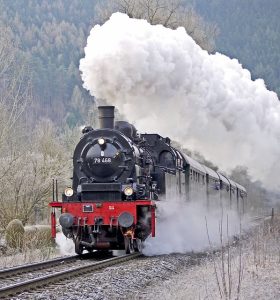Introduction
Welcome aboard the journey through time as we delve into the rich tapestry of the Key Milestones of Kiski Junction Railroad: A Retrospective. Brace yourself for a captivating exploration of the pivotal moments that shaped this historic railroad, from its humble beginnings to its rise as an iconic symbol of progress and innovation. Join me as we traverse the tracks of history, uncovering fascinating anecdotes and remarkable achievements along the way. So, without further ado, let’s embark on this enthralling excursion!
The Birth of a Legacy: The Founding Years
1. The Dream Takes Shape
In the early 1800s, as the industrial revolution began to sweep across the nation, a group of visionary individuals envisioned a railway network that would connect communities and facilitate the movement of goods. It was during this era that the seed of the Railroad was planted, with a mission to transform transportation in the region.
2. Laying the First Stone
With unwavering determination and gritty resolve, construction of the Railroad commenced in 1832. The inaugural ceremony, marked by fanfare and jubilation, saw the laying of the first stone—an act that would ignite a revolution in locomotion.
3. Overcoming Obstacles: A Herculean Feat
The construction of the Railroad encountered numerous obstacles along its path, from treacherous terrain to financial setbacks. However, the indomitable spirit of the railroad’s founders, coupled with the sweat and toil of its workers, overcame every hurdle. The completion of the railroad in 1836 stood as a testament to their unyielding perseverance.
Full Steam Ahead: The Era of Expansion
1. The Whistle Echoes
As the Kiski began operations, the piercing sound of the whistle reverberated through the valleys, announcing a new era of connectivity. Towns and cities along its route flourished, as the railroad facilitated the transportation of goods and fueled economic growth.
2. A Bridge to Progress
The construction of the majestic Kiski Junction Bridge in 1852 was a defining moment in the history of the railroad. This architectural marvel not only spanned the river but also bridged the gap between communities, uniting them in their pursuit of prosperity.
3. The Iron Horse Gallops On
With the advent of steam locomotives, Kiski witnessed a surge in speed and efficiency. The Iron Horse galloped on the tracks, reducing travel time and transforming the landscape of transportation. Passengers marveled at the newfound swiftness, while freight companies reveled in the increased capacity to transport goods.
Twists and Turns: Challenges and Resilience
1. The Dark Clouds of the Civil War
The tumultuous years of the Civil War cast a shadow over the Railroad. The conflict disrupted operations, strained resources, and tested the resolve of the railroad’s management. Yet, even in the face of adversity, the railroad persevered, playing a crucial role in supporting the war effort.
2. A Phoenix Rising: The Reconstruction Era
Following the war, KJR emerged from the ashes, stronger and more resilient than ever. The reconstruction era witnessed the modernization of the railroad, with the adoption of new technologies and the expansion of its network, enabling it to meet the evolving demands of a rapidly changing world.
3. Weathering the Storms: A Triumph of Endurance
The Railroad faced its fair share of challenges in the form of natural disasters. From devastating floods to severe winter storms, Mother Nature tested the mettle of the railroad’s infrastructure. However, through meticulous planning, swift repairs, and a dedicated workforce, the railroad weathered these storms, reinforcing its reputation for resilience.
A Legacy Preserved: The Modern Era
1. Embracing Innovation
In the latter half of the 20th century, the Railroad embraced technological advancements to enhance its efficiency and safety. The introduction of diesel locomotives and computerized systems revolutionized operations, ensuring a smoother and more reliable transportation experience for both passengers and freight.
2. A Symbol of Heritage
Recognizing the historical significance of KJR, efforts were made to preserve its legacy. The establishment of museums, restoration of vintage locomotives, and the creation of heritage tours allowed visitors to step back in time and experience the nostalgia of a bygone era.
3. The Railroad in the 21st Century
In the present day, KJR continues to play a vital role in the region’s transportation landscape. It serves as a lifeline for commerce, a source of employment, and a symbol of community pride. The railroad’s commitment to safety, sustainability, and innovation ensures its relevance in an ever-evolving world.
Conclusion
The Key Milestones of Kiski Junction Railroad: A Retrospective paints, a vivid portrait of an extraordinary journey that spans centuries. From its modest beginnings to its status as a cultural icon, the railroad has etched its indelible mark on the landscape and the hearts of the people it serves. As we conclude this retrospective, let us celebrate the visionaries, engineers, and workers who built and sustained this remarkable railroad. The Key Milestones of KJR stand as a testament to human ingenuity, perseverance, and the enduring power of progress. May the legacy of this railroad continue to inspire and captivate generations to come.

